
Journey to Orizaba, Veracruz: A Magical Town Beckoning in 2024
Journey to Orizaba, Veracruz: A Magical Town Beckoning in 2024
Orizaba Veracruz, also called “The City of the Joyful Waters,” is a vice-royal chest full of architectural jewels and marvelous landscapes.
I will tell you about its attractions and things to do, but first, let’s dive into its fascinating history. Let’s begin!
Orizaba is nestled in the mountains of central Veracruz. It was an important viceregal city, reputed as the most cultured in the country, and during its glittering history, it accumulated an architectural heritage worthy of admiration.
The first known settlers in Orizaba were Totonacs, and later the territory was dominated by Toltecs, Tlaxcaltecs, and Mexicas.
Hernán Cortés loved Orizaba’s climate and decided to stay and rest for two days when he passed through for the first time in 1520.
In 1540, sugar cane began to be planted to take advantage of the abundance of water, and in 1569 the first temple was built, consecrated to the Lord of Calvary.
Between 1797 and 1798, due to the fear of an English attack on the Port of Veracruz, Orizaba was the capital of the viceroyalty of New Spain; between 1874 and 1878, it was the state capital.
During the Independence, the city was royalist and pro-French in Maximilian’s time, being the object of reprisals on the part of the Republicans.
Where is Orizaba Veracruz?
The strategic location of Orizaba made it, during colonial times, an important station on the road between the coast of Veracruz and Mexico City, from which it is 265 km away.
Orizaba is bordered by the cities of Río Blanco and Nogales, municipalities of Veracruz. The state capital, Xalapa, is 179 km away, while the Port of Veracruz is 132 km away.
Climate
Orizaba has a pleasant mountain climate, with an average temperature of 22 °C, which rises to 26 °C between May and June, and drops to 16 or 17 °C in the winter.
Summers are rainy between June and September. It rains a little less in May and October, and the rains are scarce between November and April.
Orizaba is not a place of extreme temperatures; maximum heat rarely surpasses 28 °C, while the extreme cold is 10 or 11 °C.
Top attractions in Orizaba Veracruz

Admire the Pico de Orizaba (Orizaba’s Peak)
Orizaba is Guarded by the famous Pico de Orizaba, Mexico’s highest mountain at 5,636 meters above sea level.
Above 3,200 meters above sea level, the temperature is close to 2 °C; above 4,300 meters, it is already below zero.
Mountaineers are challenged by the perpetual snow of the dormant volcano, and the ascent is a microclimate chain that offers beautiful vegetation, fauna, and recreational activities for all tastes.
On the lower slopes, where the climate is cooler, you can camp, hike, observe nature, and practice mountain biking.
Visit the Cathedral of San Miguel Arcángel
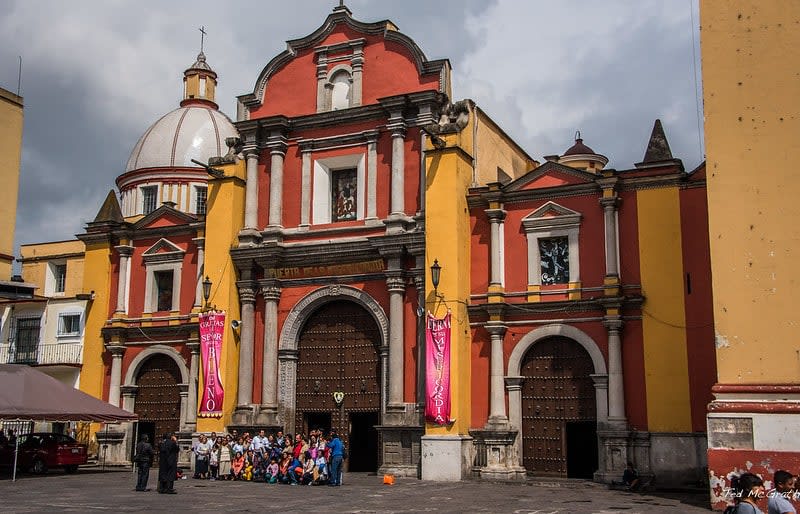
The city’s main temple is a building with three naves, a central one and two narrower side naves, and a tower built in the late seventeenth century by the Franciscans.
Its facade is sober and attractive, especially for its columns of Corinthian order in the lower level and Doric order in the upper body where the choir window is located.
The tower comprises two bodies and was installed in the 19th century to replace the original one, damaged by earthquakes.
You may want to read: Veracruz Mexico Beaches: Enjoy the Best of the Gulf
The interior stands out for the crystal chandeliers, the neoclassical altarpieces, and some paintings attributed to the artist Miguel Cabrera.
There is also a small museum showing photos and religious ornaments.
El Palacio de Hierro: The architectural jewel of Orizaba Veracruz
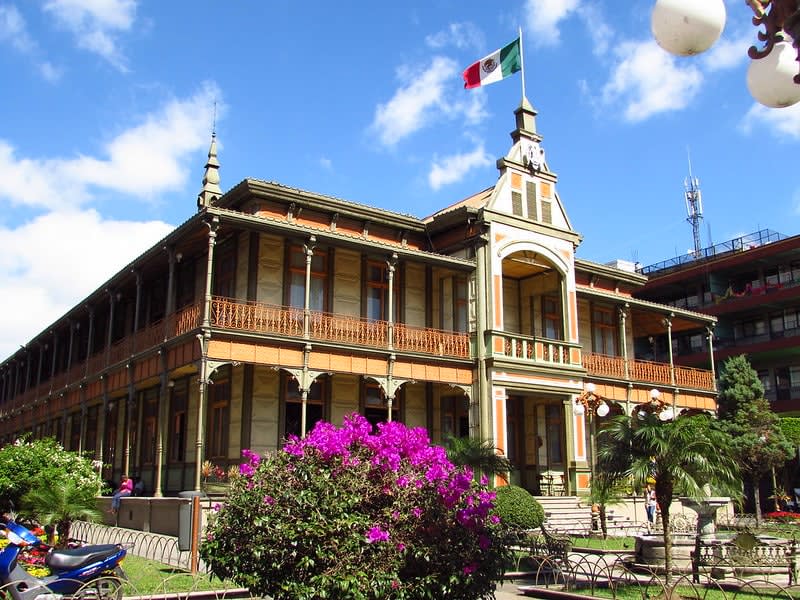
The most beautiful building in Orizaba Veracruz is the supreme representation of Art Nouveau in Mexico.
It is also the only metal palace in the world in the style that renewed architectural art at the end of the 19th century.
Its cafeteria is the most glamorous in the city.
It was designed by the famous French engineer Gustave Eiffel during the Porfiriato when Orizaba had the reputation of being the most cultured and art-loving city in the country.
Its metallic structure, bricks, wood, wrought iron details, and other components were brought from Belgium in 3 ships and were erected as the seat of municipal power.
It currently houses a beer museum and another on the history of the Orizaba Valley.
Visit the Veracruz State Art Museum
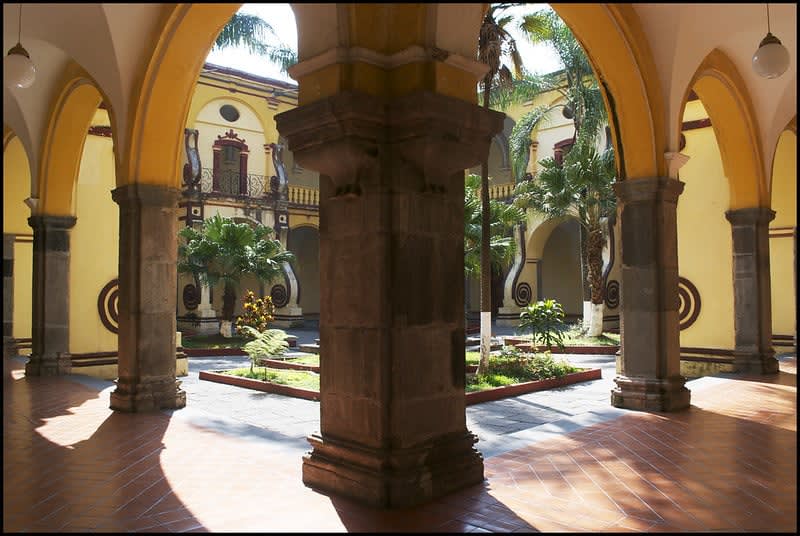
Since its construction in 1776 as the Oratorio de San Felipe Neri, this splendid two-story building and its beautiful ornamentation have been hit by earthquakes, so it has almost always cracked.
After the triumph of the Reformation in the 19th century, the Philippine monks had to abandon the building, and during the French intervention, it was a hospital for the empire’s soldiers.
Later, it was a hospital and women’s prison until the earthquake of August 1973 left it battered and abandoned for 20 years.
After being rebuilt, it became an Art Museum, and its collection of more than 600 works, including 33 by Diego Rivera, is considered the most complete in the Gulf of Mexico area.
What is the Concordia Sanctuary like?

The Sanctuary of Santa Maria de Guadalupe “La Concordia” is a temple with a beautiful facade and twin towers located in the historic center of Orizaba, in the old neighborhood of Omiquila.
It was erected by order of San Felipe Neri in 1725 after several churches built during the 17th century by the indigenous people of Omiquila collapsed because of the swampy terrain.
The facade of the present church is distinguished by the magnificent mortar relief of the Virgin of Guadalupe, ornamentation of churrigueresque style with popular influence.
Ex Convent of San José de Gracia
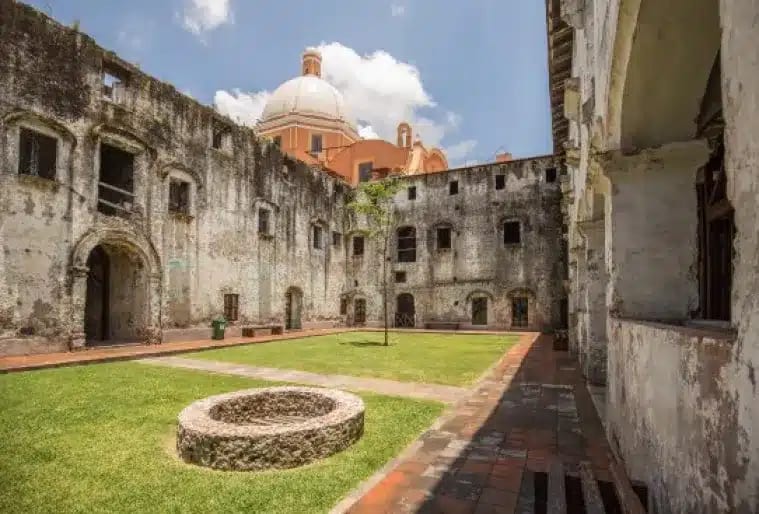
This majestic convent complex was built by the Franciscans of the Third Order in the 16th century, undergoing several remodeling works that gave it a neoclassical appearance.
After the Reformation, the convent closed its doors in 1860.
It began a long period of semi-abandonment and diverse uses for the building and its grounds, successively barracks for the French imperialist troops, neighborhood courtyard, Masonic lodge, and workers’ school during the Revolution.
The 1973 earthquake destroyed the roofs. Recently, some renovations have been carried out that have allowed the building to be opened to the public.
Gran Teatro Ignacio de la Llave
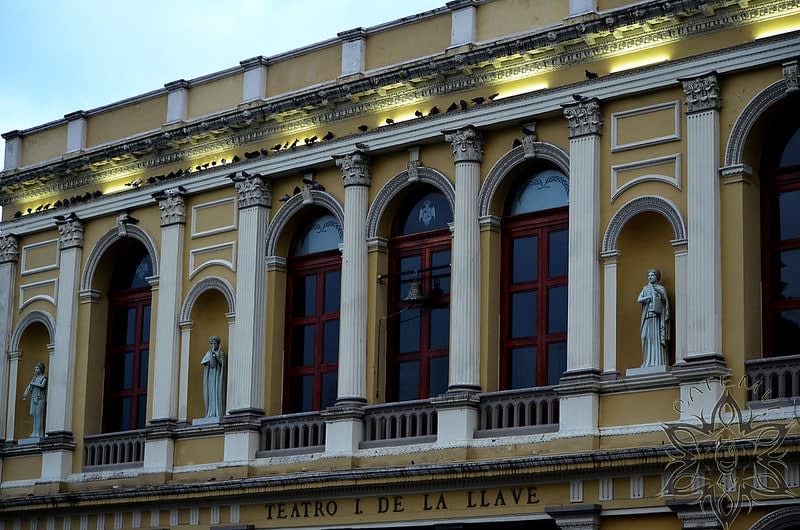
This elegant theater of Italian neoclassical style was inaugurated in 1875 with a performance by opera singer Maria Jurieff.
Its metal roof was the first in the country on a building of this size.
It is home to the city’s Classical Orchestra and is a frequent stage for theater, dance, concerts, and recitals.
Like many buildings of historical value in Orizaba, it has had a hard life due to earthquakes.
The 1973 earthquake left it in ruins and underwent a complex restoration that lasted 12 years.
It bears the name of its promoter, the prominent leader Ignacio de la Llave, a native of Orizaba, who also gave his name to the state of Veracruz.
Admire the Municipal Palace
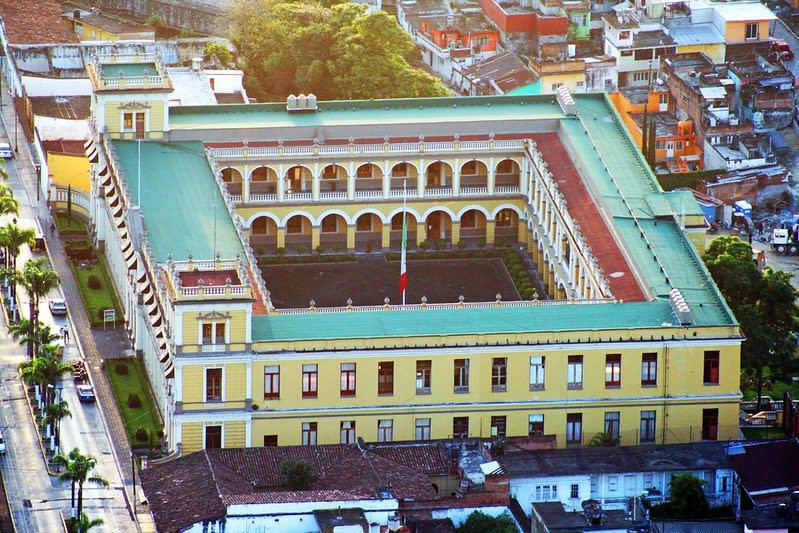
This is a magnificent French architectural building erected at the beginning of the 20th century during the Porfiriato period.
It was built to house Orizaba’s high school, an institution that enjoyed great prestige in science and arts.
The central artistic jewel of its precinct is the mural La Reconstrucción Nacional (The National Reconstruction), painted by artist José Clemente Orozco in 1926.
You may want to read: Papantla Veracruz: Magical Town and the Famous “Flyers”
The building has two levels, a tower, a central courtyard, a profusion of semicircular arches, short fences, and beautiful garden areas surrounding the esplanade.
What stands out in the Calvario Church?
The original Calvario church was the first one in Orizaba, a thatched chapel built by the Franciscans in 1569 to worship the indigenous people.
The current solid temple of neoclassical lines and large columns was erected in the 19th century and stands out for its dome, the highest in the city.
The venerated image of Jesus on the Cross, known as the Lord of Calvary, was a donation made in 1642 by the famous bishop beatified in 2011, Juan de Palafox y Mendoza.
In the interior, some pieces stand out for their beauty, such as the candelabra, two carved wooden sculptures, and a restored door.
Municipal Historical Archive Building of Orizaba Veracruz

The building that houses the city’s Historical Archive is one of the most beautiful in Orizaba.
It boasts a tiled roof, a large and welcoming courtyard, and its interior garden, with a fountain and clock, surrounded by galleries with semicircular arcades supported by elegant columns.
The building is home to the City Museum and has five rooms.
The exhibition includes a relic of the Tepaxtlaxco-Orizaba Archaeological Tombstone, maps, documents and old books, historical objects, and a gallery of the most illustrious Orizabeños characters. There is also a Novo-Hispanic Library.
What is the Casa Consistorial?
This vice-royal construction erected in 1765 was the second city hall of Orizaba, housing the municipal power until 1894.
It was also the seat of the state government palace during the period 1874 – 1878, when Orizaba was the capital of Veracruz.
The beautiful building, also called Casa de Los Consejos, is distinguished by its facades of scalloped arches on the first floor and semicircular arches on the second level, supported by columns of the same design.
In this place, the town received the title of “Leal Villa de Orizaba” by the mandate of the Spanish monarch Carlos III.
What is the importance of the Río Blanco Factory?
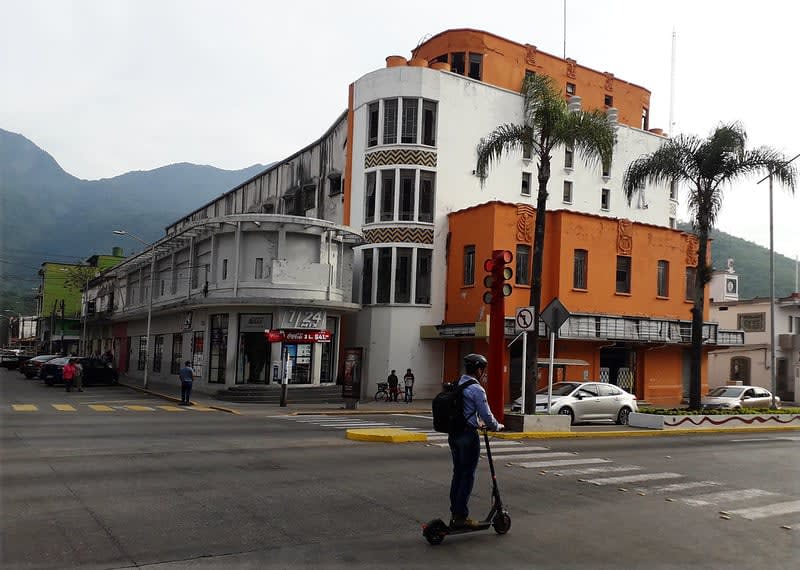
In the municipality of Rio Blanco, near Orizaba, architecture lovers linked to the historical events of modern Mexico can appreciate the building of the legendary Rio Blanco Factory, where one of the most significant episodes of the Mexican social struggles took place.
In January 1907, a union strike in the textile factory demanded better working conditions.
The strike turned into a riot, and Porfirío Díaz’s army opened fire on the crowd of about 2,000 workers in front of the building.
The number of dead was estimated between 400 and 800 workers, and the event would become one of the primary triggers of the Mexican Revolution.
What is in the Castillo Mier y Pesado?
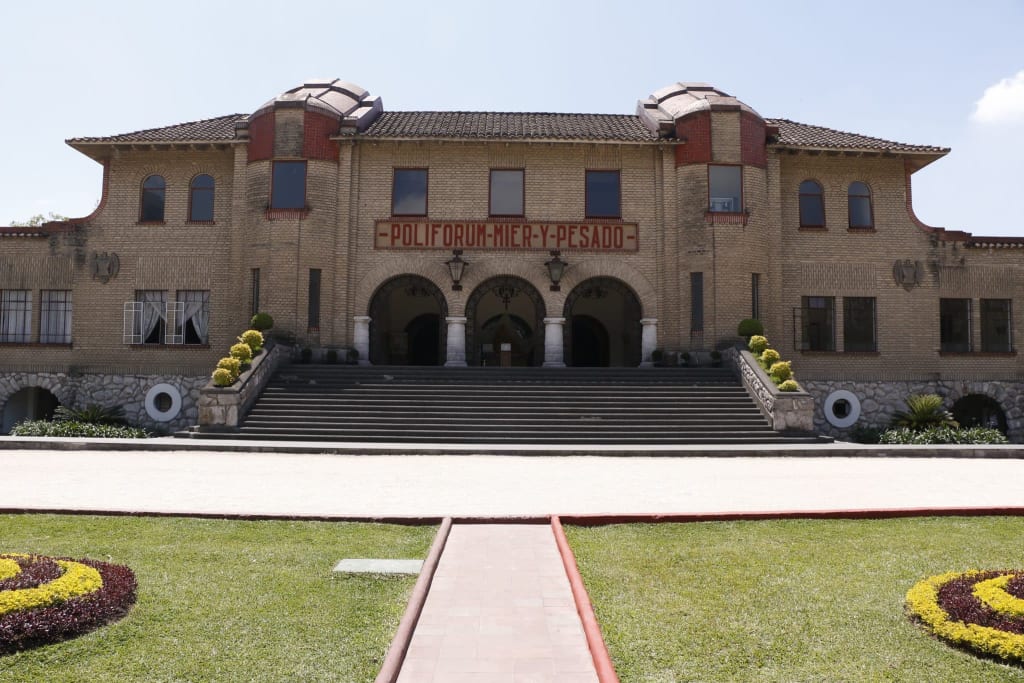
The Orizaba Castle, better known in the city as the Mier y Pesado Castle, is a large and elegant building built on an immense green property.
It stands out for the water mirror in front of the main façade, the gardens, the ornamental figures, and the splendid rooms.
The Pesado family was one of the most prestigious families in Orizaba in the 19th century, headed by Don José Joaquín Pesado Pérez, a member of the jury that approved the lyrics of the national anthem, and Doña Isabel Pesado de la Llave, Duchess of Mier.
After her son’s death a few days after his birth and of her husband, Doña Isabel ordered the creation of the Mier y Pesado Foundation, which operates in the castle, taking care of children and the elderly.
What is the interest of the Orizaba Veracruz Cemetery?

The Orizaba cemetery is a tourist attraction for two reasons: the architectural and sculptural beauty of the tombs and the so-called Piedra del Gigante (Giant’s Stone).
This 60-ton monolith is preserved in the cemetery, although it predates the graveyard and the Hispanic city for a long time.
It was an enormous rock expelled by the Orizaba volcano.
Its historical importance resides in that it was engraved with a human sacrifice made to the god Xipe Tótec on the occasion of the coronation of the Aztec tlatoani Moctezuma Xocoyotzin.
In the cemetery, there are 35 tombs of artistic interest, distinguishing La Niña del Angel, a beautiful marble sculpture in the tomb surrounded by legends of a little girl who died tragically at age 2.
Hike to el Cerro del Borrego
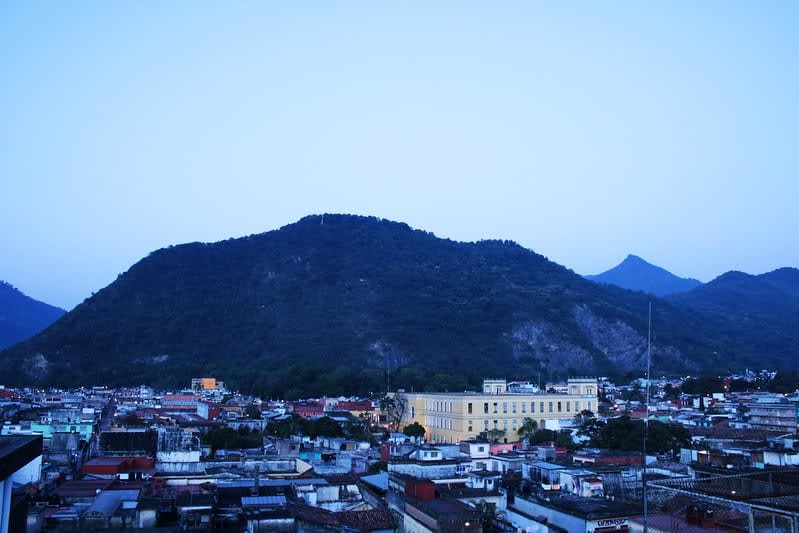
It is an elevation of 1,240 meters above sea level, whose greatest extension is within the city of Orizaba, which shares the hill with the Veracruz municipalities of Rio Blanco and Ixhuatlancillo.
It has 431 hectares and is frequented for outdoor recreational activities.
In 2014, the Cerro del Borrego Ecopark started promoting tourist activities, led by the city’s modern cable car or traditional hiking trails.
The elevation was the scene of the Battle of Cerro del Borrego, in which the French defeated the Republican forces in 1862, and the artillery pieces used are exhibited on the site.
Orizaba Veracruz Cable Car

This modern cable car, inaugurated in December 2013, has its starting point near the Independence Bridge located over the Orizaba River, on the grounds of the Pichucalco Park, ending at the summit of Cerro del Borrego.
From the cable car, the third longest in the country, there are spectacular views of Orizaba’s natural and magnificent architectural scenery.
The project was executed amid great controversy due to its cost and the impact of modern construction in a colonial city.
Still, once opened, it has become one of the great tourist attractions of Orizaba.
What can I do at the Cerro de Escamela?
This elevation, whose summit is 1,648 meters above sea level, is shared by the municipalities of Orizaba and Ixtaczoquitlán.
It is a place of interest for ecological and paleontological tourism since there are caves with marine fossils from millions of years ago in addition to its biodiversity and beauty.
At the foot of the Cerro de Escamela is the Laguna de Ojo de Agua, formed by the springs born there.
The water is cold and clear, and if you don’t dare to take a dip, you can go in a rowboat to the monument in the lagoon’s center, where according to legend, on June 24, a mermaid appears at midnight.
Stroll by the Orizaba River Walk
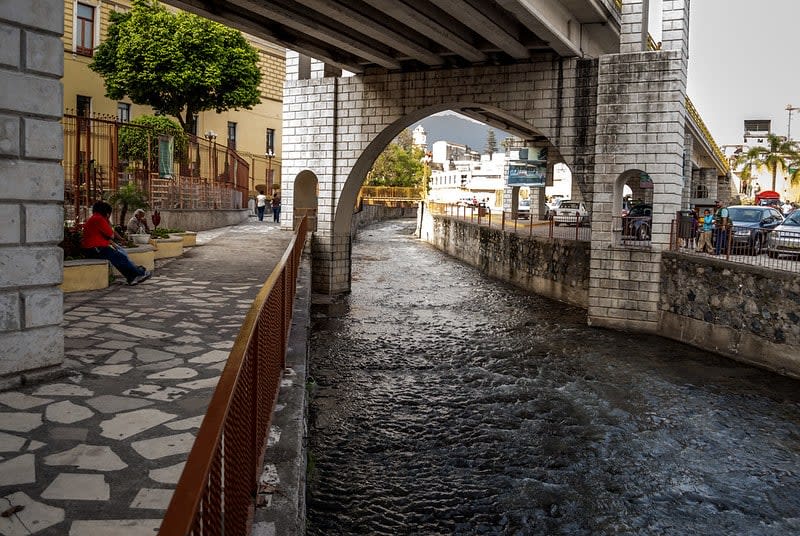
The Orizaba River promenade crosses the city from north to south, with the current flowing under several bridges built between the 16th and 19th centuries.
Orizaba is also called Nuestra Señora de Los Puentes (Our Lady of the Bridges) because these structures symbolize the town’s identity.
The walk has an extension of 5 km, with playgrounds for children and green areas with barbecue grills.
There is an animal reserve where you can admire llamas, jaguars, monkeys, crocodiles, and other species. You can take a walk or a romantic boat ride on the river too.
Río Blanco Canyon National Park
This protected area is shared by several Veracruz municipalities, including Orizaba, Ixtaczoquitlán, Río Blanco, and Nogales.
One of its attractions is the Elephant Waterfall, a beautiful 20-meter waterfall, so named because it resembled a pachyderm’s trunk.
Going down the 500 steps walkway, you can enjoy a spectacular view of the canyon and the waterfall.
The park has the highest zip line in the state, which allows you to travel 120 meters high in two routes of almost 300 meters each.
You can also go mountain biking and practice other outdoor activities.
Carbonera Canyon
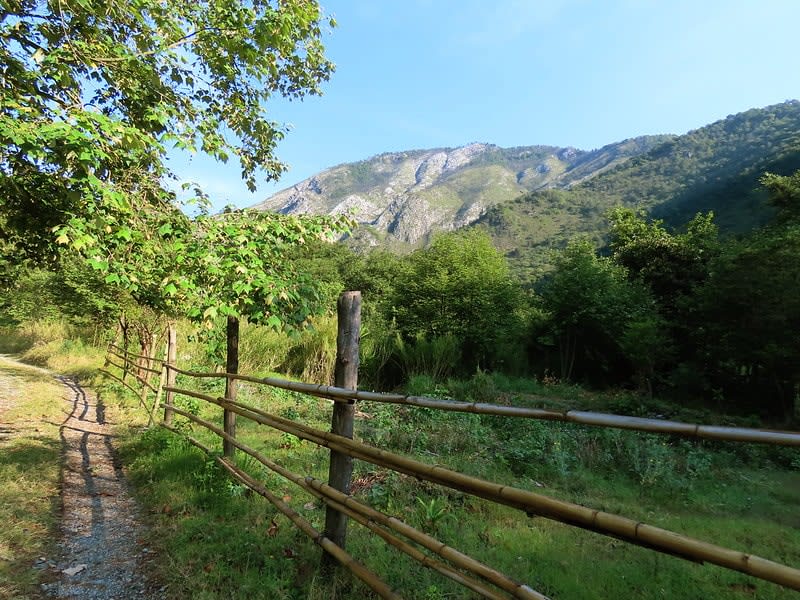
This beautiful site is in the border municipality of Nogales, whose capital is only 10 km from Orizaba.
The Cañón de la Carbonera has an infinity of waterfalls, springs, and caverns, so it is visited by those interested in ecotourism activities and speleology enthusiasts.
It is almost 9 km long, and its depth varies between 200 and 750 meters. Hiking, canyoning, and rappelling lovers also frequent this beautiful place.
Get some handicrafts
Orizaba’s main handicrafts are pottery, ceramics, hammocks, and ornaments made from coffee beans.
The ideal place to buy one of these objects as a souvenir is the Cerritos Market.
One of the typical local dishes is chileatole, a stew with corn and chiles. Another local delicacy is pambazo veracruzano de carne polaca, similar to a hamburger.
People in Orizaba are addicted to the café bombón or picardía orizabeña, prepared with coffee liqueur, condensed milk, and a touch of espresso.
Main festivities in Orizaba Veracruz
Orizaba maintains a busy calendar of festivities. On March 19, they celebrate the father of Jesus in the church of San José de Gracia.
Expori, Orizaba’s fair, is in April, displaying the top regional products and many other attractions.
June 24 is the feast of San Juan, whose main night scene is the Cerro de Escamela, where people search for the mysterious mermaid that, according to legend, appears on the night of the Baptist.
The first Sunday of July is the festivity of Nuestro Señor del Calvario, celebrated in the historical center in the oldest temple of Orizaba.
The Colonia Barrio Nuevo honors the Virgen de la Asunción on August 15, and on August 18, it is the turn of the Virgen del Rayo in the churches of San José and San Juan Bautista.
The patron saint festivities in honor of San Miguel Arcángel are on September 29, with colorful sawdust carpets, and October 4 corresponds to San Francisco de Asís.
On October 6, Francisco Gabilondo Soler, the father of the popular character Cri-Cri, one of the most beloved Orizabeños, is remembered.
Best hotels in Orizaba
- Holiday Inn Orizaba has a reputation for providing the best hotel service in the city, very close to the historic center
- Tres79 Hotel Boutique Orizaba, located in Colón Poniente 379, has a beautiful decoration full of artistic details, and its service is first class
- The Hotel del Rio is on the banks of the Orizaba River so that you can feel in the middle of nature with a central location
Other lodging options in Orizaba are Lusitania Suites, Pluviosilla, Hotel Trueba, Hotel L’Orbe, Hotel Ha, Hotel Arenas, and Hotel Cascada
Recommended restaurants
- Pizzatl – Pízzeria Delicatessen serves the best pizzas in town
- Marrón Cocina Galería has Italian, Mexican, and Mediterranean dishes and is highly praised for its salads and sauces
- Madison Grill is located across the street from La Concordia Park and offers tender Sonora Prime steaks and juicy burgers
- Taco T is known for its tortas árabes, a tasty and economical option
Did you like this virtual tour of Orizaba?
I hope you can take a real one soon and share your experiences with us. Stay safe and healthy. Vamonos!